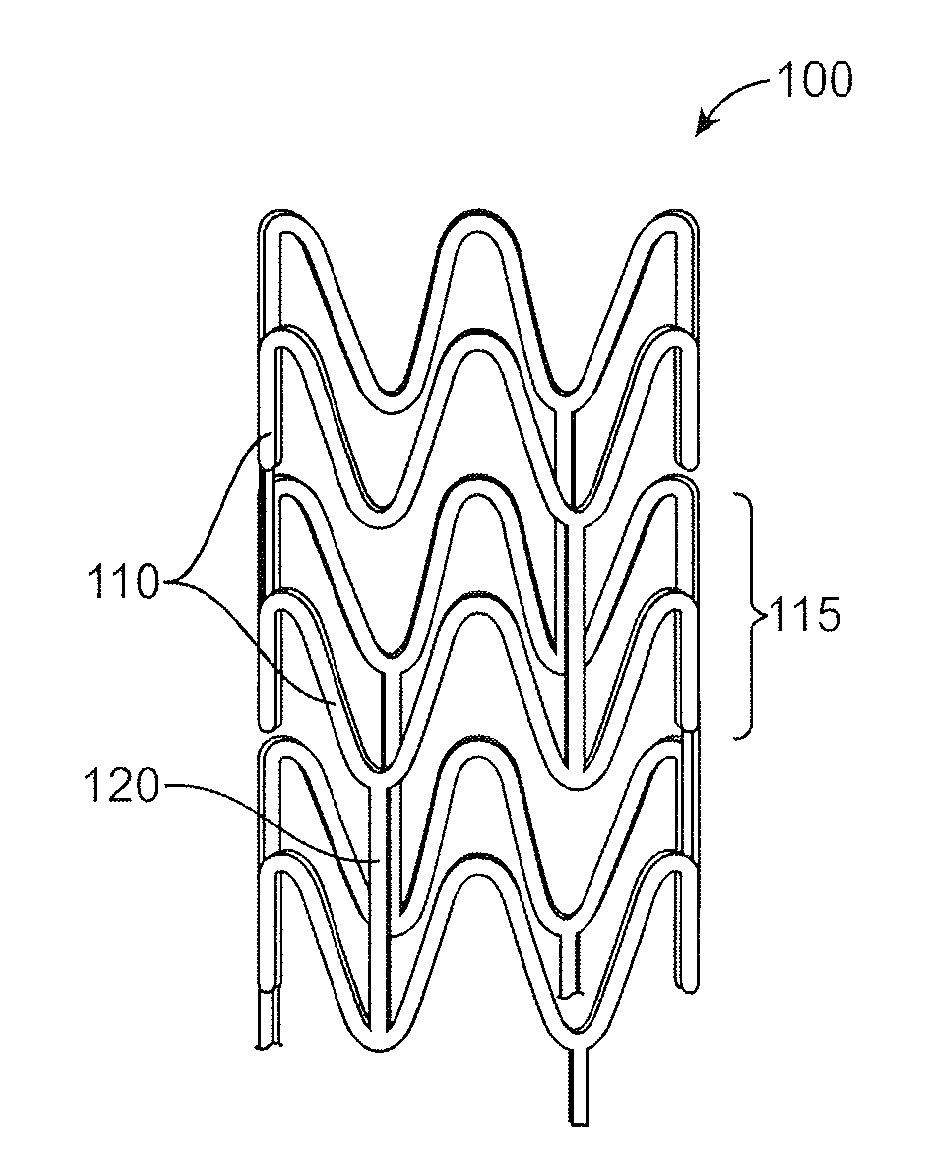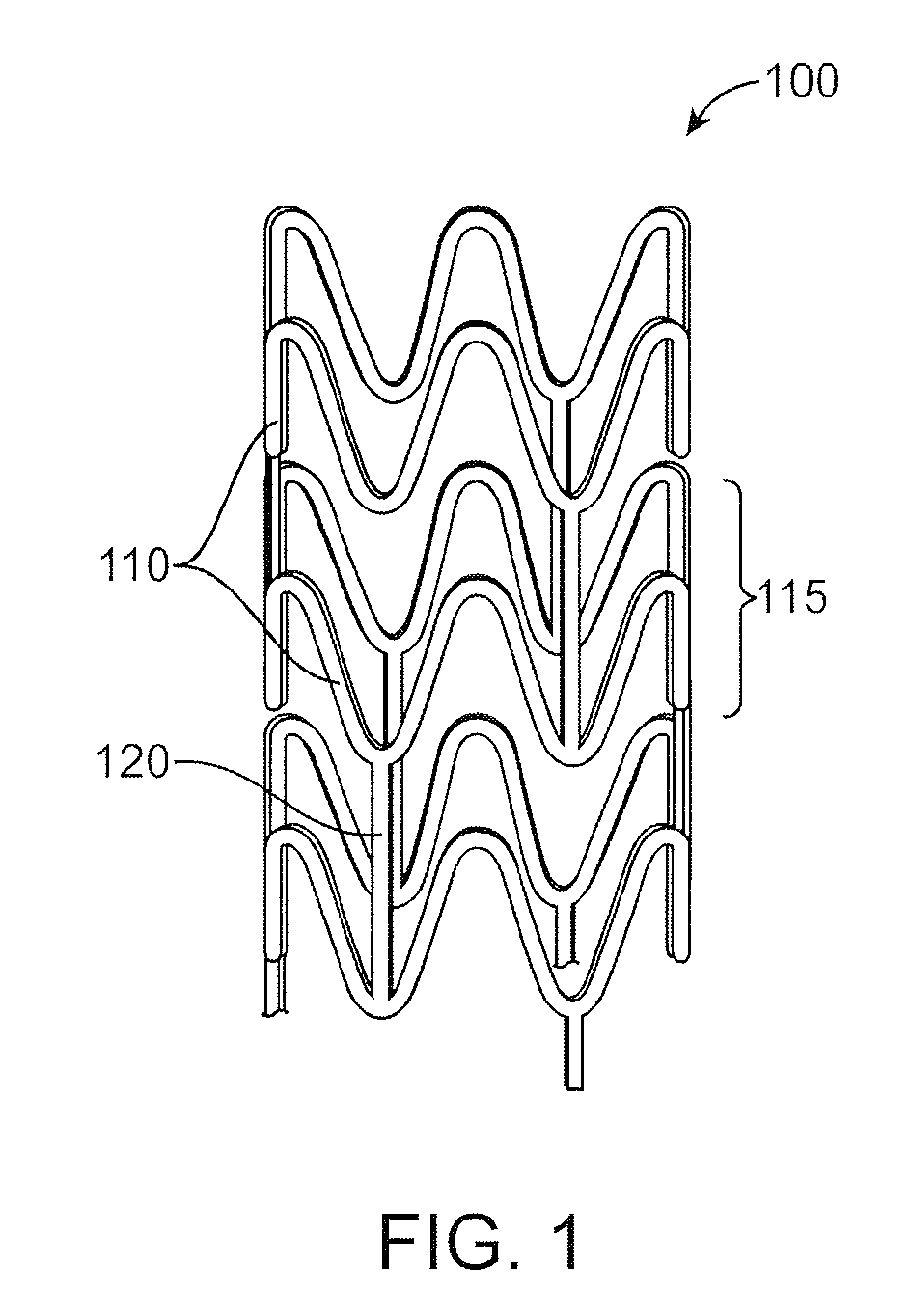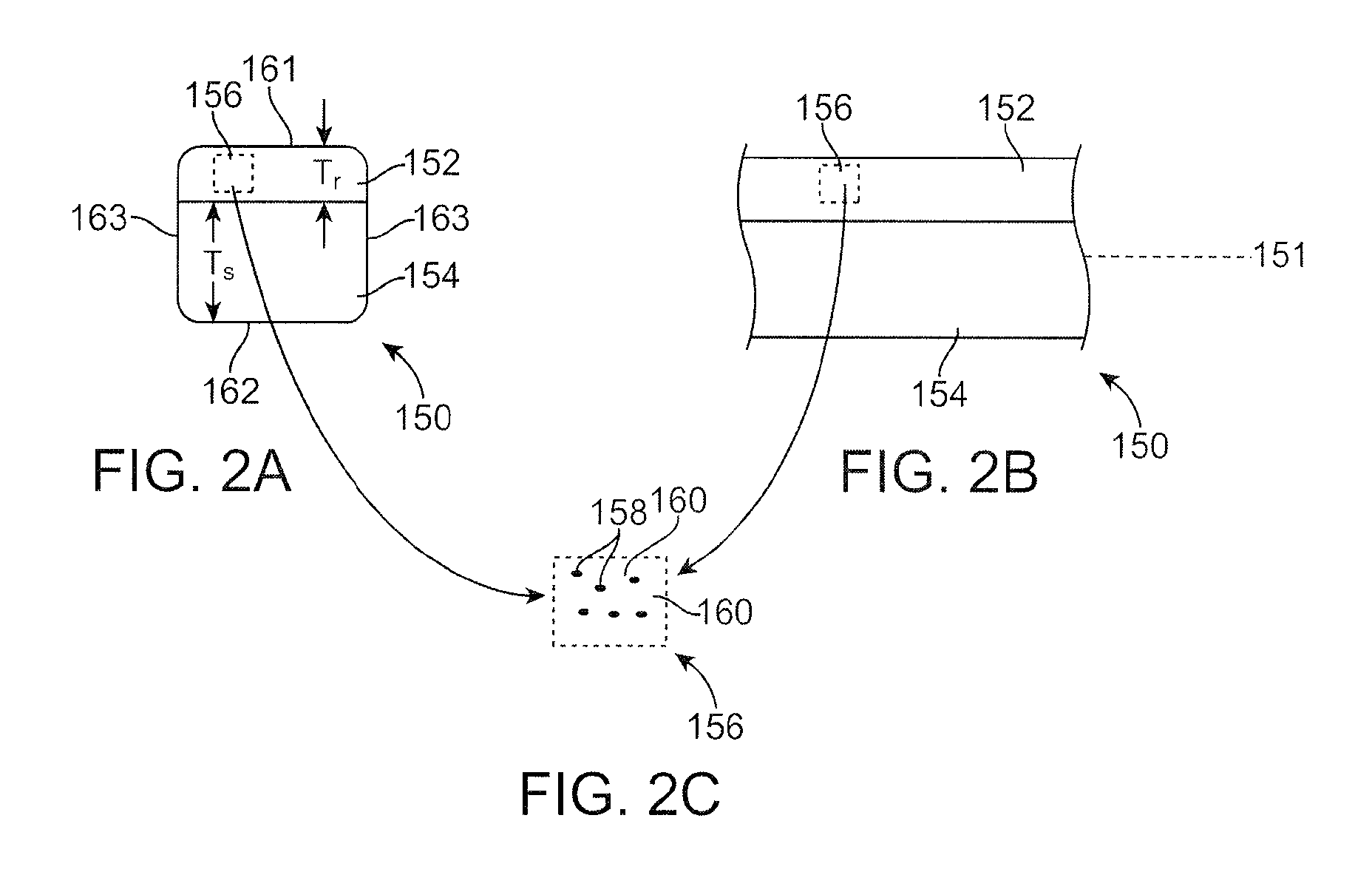Bioabsorbable stent with radiopaque layer and method of fabrication
a bioabsorbable polymer and radiopaque layer technology, applied in the field of implantable medical devices, can solve the problems of insufficient radiographic density of commercially available bioabsorbable polymers, and inability to be easily imaged by fluoroscopy
- Summary
- Abstract
- Description
- Claims
- Application Information
AI Technical Summary
Benefits of technology
Problems solved by technology
Method used
Image
Examples
example 1
[0082]1. A blend of PLLA-co-PCL (90% PLLA and 10% PCL) and tungsten nanoparticles (polymer / particle −20:1 by volume or 1:1 by weight) is prepared using a compounder at 200° C.
[0083]2. A bi-layer tube is formed by the co-extrusion of PLLA as an inner layer and the PLLA-co-PCL / tungsten nanoparticles as the radiopaque outer layer. The thickness of the PLLA outer layer and the radiopaque layer is set to 0.05 inch and 0.02 inch, respectively. The inside diameter (ID) of the extruded tubing is set to about 0.021 inch and the outside diameter (OD) is about 0.091 inch.
[0084]3. The bi-layer tube is radially expanded. A stent pattern is cut into the expanded tubing. The total thickness of the stent struts is about 0.008 inch.
example 2
[0085]1. A blend of PLLA and barium sulfate (100:30 by weight) is prepared using a compounder at 200° C.
[0086]2. A bi-layer tube is formed by the co-extrusion of PLLA as an inner layer and the PLLA / barium sulfate as the radiopaque outer layer. The thickness of the PLLA outer layer and the radiopaque layer is set to 0.05 inch and 0.02 inch, respectively. The inside diameter (ID) of the extruded tubing is set to about 0.021 inch and the outside diameter (OD) is about 0.091 inch.
[0087]3. The bi-layer tube is radially expanded. A stent pattern is cut into the expanded tubing. The total thickness of the stent struts is about 0.008 inch.
example 3
[0088]1. A blend of PLGA and barium sulfate (100:30 by weight) is prepared using a compounder at 200° C.
[0089]2. A bi-layer tube is formed by the co-extrusion of PLGA as an inner layer and the PLGA / barium sulfate as the radiopaque outer layer. The thickness of the PLGA outer layer and the radiopaque layer is set to 0.05 inch and 0.02 inch, respectively. The inside diameter (ID) of the extruded tubing is set to about 0.021 inch and the outside diameter (OD) is about 0.091 inch.
[0090]3. The bi-layer tube is radially expanded. A stent pattern is cut into the expanded tubing. The total thickness of the stent struts is about 0.008 inch.
PUM
 Login to View More
Login to View More Abstract
Description
Claims
Application Information
 Login to View More
Login to View More - R&D
- Intellectual Property
- Life Sciences
- Materials
- Tech Scout
- Unparalleled Data Quality
- Higher Quality Content
- 60% Fewer Hallucinations
Browse by: Latest US Patents, China's latest patents, Technical Efficacy Thesaurus, Application Domain, Technology Topic, Popular Technical Reports.
© 2025 PatSnap. All rights reserved.Legal|Privacy policy|Modern Slavery Act Transparency Statement|Sitemap|About US| Contact US: help@patsnap.com



